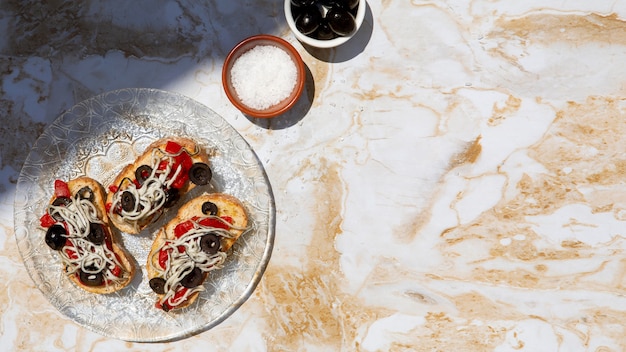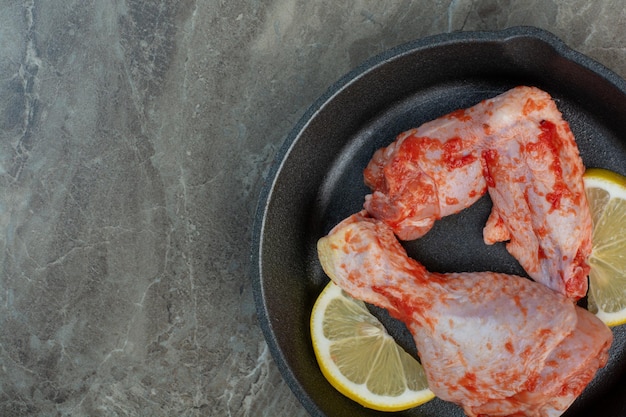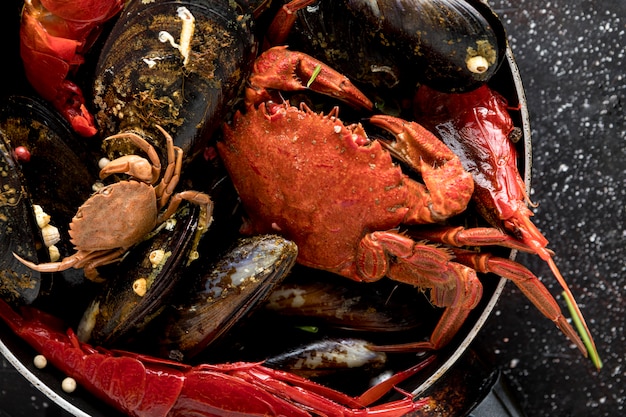Let's talk stone crabs, a true delicacy that has captivated seafood lovers for years. My first taste of these succulent crustaceans down in Florida was a revelation – the sweet, tender meat, the satisfying crack of the shell, it was a culinary adventure. Since then, I've learned a thing or two about cooking and enjoying these beauties, and I'm excited to share my knowledge with you. This isn't just any guide, it's your ultimate stone crab guide, packed with tips, tricks, and insights to elevate your experience. Ready to dive in? Let's get cracking!
(Part 1) Stone Crabs: A Primer

Stone crabs are fascinating creatures, a type of crustacean related to blue crabs but with a distinct personality. They're found primarily along the southeastern coast of the United States and in certain Caribbean waters. Their name comes from their hard, stony shells, which are actually quite impressive. But here's the interesting part: it's only the claws that are harvested. This is because the claws are the most flavorful and, importantly, the practice is sustainable. When you harvest the claws, the crab can regenerate them, making it a responsible and delicious way to enjoy these beauties.
The Two Claws: Jumbo vs. Smaller
There are two main types of claws you'll find on a stone crab: the large "jumbo" claw and the smaller "smaller" claw. The jumbo claw is, as you might expect, the larger of the two. It's usually the dominant claw and boasts a more substantial amount of meat. The smaller claw is, well, smaller, but it's still packed with deliciousness. The price difference between the two can be significant, so knowing your options is essential. If you're looking for a truly indulgent experience, the jumbo claw is the way to go. But if you're on a budget or just want to sample a variety of flavors, the smaller claw is a fantastic choice.
Choosing the Perfect Stone Crab Claws
Now, let's talk about how to pick the perfect stone crab claws. You want them to be fresh and vibrant, bursting with flavor. Here's a quick checklist to keep in mind:
- Freshness is Key: Check for firmness. The claws should feel solid to the touch, not soft or mushy. This indicates they are fresh and haven't been sitting around for too long.
- Color Matters: Look for a bright, vibrant red color. Dull or faded coloration can signal that the claws aren't as fresh as they could be.
- The Band Tells a Tale: Examine the band that holds the claws together. It should be strong and tight, not loose or damaged. A good band indicates the claws have been handled with care and are ready to be enjoyed.
(Part 2) Preparing Stone Crab Claws for Cooking

You've got your claws, now what? It's time to get them ready for cooking. Don't worry, this isn't a complicated process. It's more about understanding what works best, and I'm here to guide you every step of the way.
Cleaning Your Stone Crab Claws
First things first, give those claws a good rinse under cold water. Wash away any dirt, sand, or debris that might be clinging to them. Now, the fun (well, not really fun) part: cracking the claws. There are a few methods, but I've found the most effective is using a mallet or a heavy knife. You want to crack the claw just enough to break through the shell without crushing the meat inside. Be careful, those shells are tough! You can also opt to have your fishmonger crack the claws for you, saving you a little effort.
How to Crack Stone Crab Claws
If you're cracking them at home, a crab cracker or a mallet is your best friend. Place the claw on a sturdy cutting board and use the tool to crack it in half. You'll hear a distinct snapping sound as the shell gives way. With a mallet, aim for the joint near the base of the claw. Practice makes perfect, and don't worry about getting a little messy – it's all part of the stone crab experience!
Storing Your Stone Crab Claws
You've cleaned and cracked those claws, now what? Storing them correctly is crucial to preserving their freshness and flavor. You've got a few options:
- Refrigerator Storage: Store your cracked claws in the refrigerator for up to a week. Wrap them tightly in plastic wrap or place them in an airtight container to prevent drying out.
- Freezing for Later: You can freeze stone crab claws for up to a month. Wrap them tightly in plastic wrap and place them in a freezer-safe bag. Remember, freezing can slightly affect the texture, so fresh is always preferable.
(Part 3) Cooking Up Your Stone Crab Claws

You've done the prep work, now for the main event: cooking. There are a few classic methods for cooking stone crab claws, each offering its own unique flavor profile. Get ready to experience the magic!
Boiling Stone Crab Claws
This is a classic, tried-and-true method that's simple and effective. It's a great option for a crowd because it's easy to cook large quantities at once.
- Boil the Water: Fill a large pot with water and bring it to a rolling boil.
- Season the Water: Add a generous amount of salt to the boiling water. You can also add a few bay leaves for extra flavor.
- Gently Add the Claws: Carefully lower the claws into the boiling water. Make sure there's enough space for them to cook evenly. Avoid overcrowding the pot.
- Cook to Perfection: Let the claws boil for about 10-15 minutes, or until the meat is cooked through. You can test for doneness by poking the meat with a fork. It should be firm and opaque.
- Cool Down: Carefully remove the claws from the boiling water and let them cool slightly before serving.
Grilling Stone Crab Claws
For a smoky, grill-kissed flavor, grilling stone crab claws is a fantastic option. It's a bit more hands-on, but the results are well worth the effort.
- Preheat Your Grill: Preheat your grill to medium-high heat.
- Dress for Flavor: Lightly brush the claws with olive oil and season generously with salt and pepper.
- Grill Time: Place the claws on the grill and cook for about 5-7 minutes per side, or until the meat is cooked through.
- Rest and Serve: Remove the claws from the grill and let them cool slightly before serving.
Other Cooking Methods
While boiling and grilling are popular, there are other ways to cook stone crab claws. You can steam them for a delicate flavor or bake them for a more intense heat. Feel free to experiment with different techniques to find your favorite!
(Part 4) Dipping Sauce Delights
Now, let's talk dipping sauces. A good dipping sauce can transform your stone crab experience, taking it from good to extraordinary. Here are a few of my favorites to get you started.
Classic Mustard Sauce
This is a classic for a reason. It's simple to make and the tangy mustard perfectly complements the sweetness of the crab meat.
- Mix the Ingredients: In a small bowl, combine Dijon mustard, mayonnaise, lemon juice, and a pinch of salt and pepper.
- Adjust to Taste: Taste the sauce and adjust the ingredients to your liking.
- Chill and Serve: Chill the sauce thoroughly before serving.
Garlic Butter Sauce
This sauce is rich, flavorful, and a perfect match for the delicate taste of stone crab. The butter adds richness, the garlic provides a pungent aroma, and the lemon juice adds a bright, refreshing touch.
- Melt the Butter: Melt butter in a small saucepan over medium heat.
- Sauté the Garlic: Add minced garlic to the melted butter and cook until fragrant, about 1 minute.
- Finish with Flavor: Stir in lemon juice, chopped parsley, and a pinch of salt and pepper.
- Serve Warm: Serve the sauce warm, allowing the flavors to really bloom.
Spicy Remoulade
For those who like a little kick, this spicy remoulade is the perfect choice. It adds a nice punch of heat to the sweet crab meat.
- Combine the Ingredients: In a small bowl, combine mayonnaise, Dijon mustard, chopped gherkins, chopped capers, minced garlic, and your favorite hot sauce.
- Adjust to Taste: Taste the sauce and adjust the ingredients to your liking.
- Chill and Serve: Chill the sauce thoroughly before serving.
(Part 5) Serving Stone Crab Claws with Style
You've cooked your claws, you've got your dipping sauces ready, now it's time to present them in a way that's as impressive as the taste. It's all about creating a beautiful and inviting spread.
A Visual Feast
Presentation is key, and stone crab claws offer a wonderful opportunity to get creative. Serve them on a platter or a rustic wooden board. Add some fresh greenery, like sprigs of parsley or lemon slices, for a pop of color. You can even have separate bowls for different dipping sauces, allowing guests to choose their favorites. Think about the overall theme. A classy, elegant look is always nice, or you can go for a casual, beachy vibe – it's all about setting the tone for your culinary experience.
Tools for the Task
Don't forget the essential tools! You'll need crab crackers to crack open those claws and small forks to extract the delicious meat. It's also a good idea to have a bowl for the shells, so your table doesn't become a mountain of crustacean remains. Napkins or wet wipes are a must for easy cleanup.
(Part 6) Stone Crab Etiquette: How to Enjoy Those Claws
You've got your claws, you've got your sauce, you've got your tools, now it's time to savor the moment. Eating stone crab claws might seem a bit intimidating, but it's actually quite straightforward.
The Basic Technique
- Prepare the Claw: Take a claw and place it on your cutting board or a plate.
- Crack It Open: Use your crab cracker to crack the claw in half.
- Separate the Pieces: Carefully separate the pieces of the claw to expose the meat.
- Extract the Meat: Use your fork to extract the meat from the claw.
- Dip and Enjoy: Dip your meat in your favorite sauce and savor every delicious bite!
Tips for Enjoying Stone Crab
Here are a few extra tips to make your stone crab experience even more enjoyable:
- Embrace the Mess: Don't be afraid to get messy! It's part of the fun, and it shows you're truly enjoying the experience.
- Tools at Your Disposal: If you're struggling to get the meat out, don't hesitate to use a small knife or fork to help you.
- Don't Forget the Knuckle: Save the knuckle for last. It's often the most flavorful part of the claw.
- Waste Not, Want Not: Don't throw away the shells! You can use them to make a delicious stone crab bisque.
(Part 7) Stone Crabs and Sustainability
Let's talk about a crucial aspect of enjoying stone crabs: sustainability. These creatures are an integral part of the marine ecosystem, and we need to ensure we harvest them responsibly. In the United States, stone crab harvesting is tightly regulated with size limits and closed seasons to protect the population. But it's still vital to be aware of the impact of our choices. Here are a few things to keep in mind:
Sustainable Seafood Choices
When purchasing stone crab claws, choose sources that are certified sustainable. Organizations like the Marine Stewardship Council (MSC) certify fisheries that meet rigorous standards, ensuring responsible fishing practices. Supporting sustainable seafood is a crucial step in protecting our oceans and the delicious seafood we enjoy.
Avoiding Overfished Species
Overfishing poses a serious threat to marine ecosystems. Some seafood species are harvested at unsustainable rates, leading to population declines and disrupting the delicate balance of marine life. If you're unsure about a particular species, research its status before purchasing. Organizations like Oceana and Seafood Watch provide valuable information on sustainable seafood choices.
Supporting Local Fisheries
Buying seafood from local fisheries benefits both your community and the environment. Local fisheries often have sustainable practices and reduce the environmental impact of transporting seafood long distances. Seek out seafood markets or restaurants that source their seafood from local fishermen. This is a great way to ensure your stone crab claws are fresh, flavorful, and ethically sourced.
(Part 8) Fun Facts About Stone Crabs
Let's break up the serious talk with some fun facts about these fascinating creatures. They're not just delicious; they're full of surprises!
Fun Fact 1: They Can Regrow Claws
You already know this, but it's still remarkable. When a stone crab loses a claw, it can regrow a new one! This takes a few years, but it's a testament to their resilience and adaptability.
Fun Fact 2: They're Nocturnal
Stone crabs are more active at night, foraging for food on the seafloor. They're the party animals of the crustacean world, but only after the sun sets!
Fun Fact 3: They Can Be Cannibals
Sometimes, stone crabs will eat each other. It's a bit gruesome, but it's part of their natural behavior. They're not always the friendly, cuddly creatures we imagine them to be.
Fun Fact 4: They Can Live Up to 20 Years
Yes, you read that right. Stone crabs can live a long, fulfilling life. This makes it even more essential to practice sustainable fishing to protect these long-lived creatures.
Fun Fact 5: They're Not Actually Crabs
This one might surprise you. Stone crabs are actually classified as a type of "hermit crab." They don't have the true crab body plan, but they're still delicious, and we won't hold it against them!
FAQs
You've got your stone crab feast planned, you're feeling confident, but you might have a few lingering questions. Here are answers to some commonly asked questions.
1. What's the Best Way to Cook Stone Crab Claws?
The best way to cook stone crab claws is a matter of personal preference. Some people love boiling them for a classic flavor, while others prefer grilling for a smoky, intense taste. Experiment with different methods and discover your favorite.
2. How Do I Know When Stone Crab Claws Are Cooked?
Stone crab claws are cooked through when the meat is firm and opaque. You can test for doneness by poking the meat with a fork. If the meat is still soft and translucent, it needs to cook a bit longer.
3. How Long Can I Keep Stone Crab Claws in the Refrigerator?
Stone crab claws can be stored in the refrigerator for up to a week. Wrap them tightly in plastic wrap or place them in an airtight container to preserve their freshness.
4. Can I Freeze Stone Crab Claws?
Yes, you can freeze stone crab claws for up to a month. Wrap them tightly in plastic wrap and place them in a freezer-safe bag to prevent freezer burn. Remember, freezing can affect the texture slightly, so fresh is always ideal.
5. What are Some Good Dipping Sauces for Stone Crab Claws?
There are many delicious dipping sauces for stone crab claws, but some popular favorites include classic mustard sauce, garlic butter sauce, and spicy remoulade. Choose a sauce that complements your taste and preferences.
There you have it, your complete stone crab guide! From selecting the perfect claws to creating a memorable dining experience, you have all the information you need to enjoy this delicious delicacy. So get out there, find some fresh claws, and get cracking!
Everyone is watching

Corn on the Cob: The Ultimate Guide to Perfectly Cooked Ears
Healthy MealsAh, corn on the cob. Just the name evokes images of sunny days, barbecues, and that sweet, juicy flavour that ...

Perfect Pork Roast Oven Cooking Time: A Guide to Delicious Results
Healthy MealsThere's something truly satisfying about a perfectly roasted pork. The aroma alone is enough to make your mout...

Ham Cooking Time: How Long to Bake, Smoke, or Boil a Delicious Ham
Healthy MealsAh, ham. It's a classic, isn't it? A real crowd-pleaser, especially around holidays. And when done right, it'...

Scallops: The Ultimate Guide to Perfect Cooking
Healthy MealsAh, scallops. Those delicate, sweet, and utterly delicious morsels of the sea. They hold a special place in my...

Spaghetti Squash: The Ultimate Guide to Cooking and Serving
Healthy MealsRemember that time you saw spaghetti squash at the supermarket, looking all bumpy and strange, and thought, "W...
